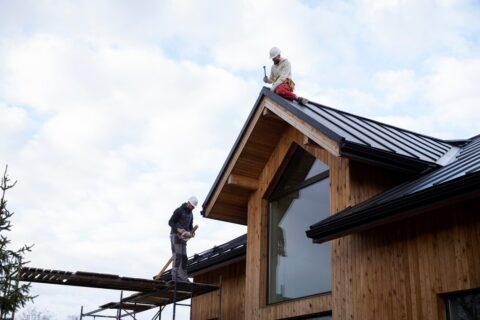How to Protect Your Roof from Heavy Snow
Ottawa winters bring plenty of snow, making it crucial to protect your roof. A heavy snow load can stress your roof, leading to potential damage or leaks if not addressed. It’s not just about clearing the snow; preparation plays a huge role in preventing problems before they start.
Start by making sure your roof is ready for winter. A strong, well-maintained roof can handle heavy snow much better. Regular inspections help spot issues early, like loose shingles or minor leaks, that could become bigger problems under the weight of snow.
Even with the best preparation, snow can still pile up. Knowing how to remove it safely is key to avoiding damage. Taking some time to learn simple maintenance methods keeps your roof strong and your home safe during Ottawa’s snowy season.
Understanding the Impact of Heavy Snow on Roofs
Heavy snow puts substantial pressure on roofs, especially in places like Ottawa where significant snowfall is common. The weight of snow accumulates quickly, sometimes reaching hundreds of kilograms depending on moisture content. This load can cause strain on your roof’s structure.
When snow piles up excessively, several issues may arise:
– Structural Stress: The weight can lead to sagging, cracked rafters, or even roof collapse in severe cases.
– Leaks and Water Damage: Snow that melts slightly and then refreezes can create ice dams. These ice barriers trap water, which can seep under shingles and cause leaks.
– Material Damage: Shingles and roofing material can become brittle in extreme cold, making them more prone to breaking under the weight of snow and ice.
To mitigate these effects, begin with a proper understanding of your roof’s load-bearing capacity. Knowing the design and build quality can help assess how much snow it can safely bear. Pay attention to your roof’s slope as well. Steeper roofs generally shed snow more easily than flat ones, reducing accumulation and potential damage.
Inspect your roof regularly during winter months. Look for signs of stress, like new cracks, odd noises, or visible sagging. Early detection lets you address problems before they escalate, maintaining the roof’s integrity through snow-filled months.
Preparing Your Roof for Winter Weather
Preparation is vital to safeguard your roof against heavy snow. A few proactive steps before winter arrives can help your roof withstand harsh conditions without damage.
Start with a thorough inspection. Check for:
– Loose or Missing Shingles: Replace these to ensure a solid barrier against the elements.
– Cracked Flashing: Fix any damage to prevent leaks around chimneys and vents.
– Insulation Issues: Adequate insulation keeps your attic warm and helps prevent ice dam formation by reducing heat escape.
Once inspections and repairs are done, consider the following preparation tips:
– Trim Overhanging Branches: Branches can shed snow onto your roof or break under heavy snow, causing direct damage. Keeping trees trimmed also reduces falling debris.
– Install a Snow Guard: This tool helps break up snow to prevent large sheets from sliding off suddenly, which can cause damage to gutters and the ground below.
– Improve Attic Ventilation: Sufficient airflow will help maintain a consistent roof temperature, further preventing snow from melting and refreezing on your roof.
By ensuring your roof is in top shape before the snow hits, you increase its ability to handle heavy snowfall without issues. Simple checks and repairs can go a long way in protecting your home throughout Ottawa’s long winter season.
Effective Snow Removal Techniques for Roofs
Once snow accumulates, it’s important to clear your roof safely to prevent damage. Using the right techniques can make the process easier and protect your roof from getting hurt.
1. Use a Roof Rake: A roof rake is a long-handled tool designed to pull snow off without climbing onto the roof. Stand on the ground and gently pull the snow down towards you, avoiding too much force that might loosen shingles.
2. Work from the Edge: Start snow removal from the eaves and gradually work upwards. This reduces the pressure on the roof while ensuring that snow doesn’t pile further up, which can lead to ice dams.
3. Avoid Metal Tools: Sharp tools like shovels or picks can damage your roof’s surface and should be avoided. Stick to plastic or snow-specific devices to prevent punctures or scrapes.
4. Clear Little, Clear Often: After significant snowfall, clear the accumulated snow frequently rather than waiting until it becomes an unmanageable weight.
Ensure safety by working with someone and always being cautious of power lines and icy patches. If your roof has a steep pitch or you feel unsafe at any point, it’s best to contact professionals to handle the snow removal.
Long-Term Maintenance Strategies to Strengthen Your Roof
Long-term maintenance greatly boosts your roof’s ability to withstand heavy snow. By keeping your roof in good shape, you can prevent damage and extend its lifespan.
1. Schedule Regular Inspections:
Conduct roof inspections twice a year, in spring and fall. Look for any signs of wear and tear, like cracked shingles or damaged flashing. Spotting and fixing problems early helps maintain your roof’s strength.
2. Reinforce Structural Elements:
Consider reinforcing certain parts of your roof, especially if your home is older. You might add extra support beams or upgrade materials to cope with heavy snow loads more effectively.
3. Maintain Gutters and Downspouts:
Keep gutters and downspouts clear to ensure snowmelt drains properly. Clogged gutters can cause water to back up and freeze, leading to ice dams. Clean them regularly and consider installing gutter guards for less maintenance.
4. Invest in Quality Roofing Materials:
Use durable, weather-resistant roofing materials. Asphalt shingles, for example, provide excellent protection against the elements when properly installed and maintained.
Regular upkeep and proactive care will strengthen your roof, helping it endure Ottawa’s snowy winters year after year. Building good maintenance habits ensures your roof stays sturdy and reliable.
Conclusion
Protecting your roof from heavy snow involves understanding the impacts and preparing effectively. Regular maintenance and smart snow removal are key to keeping your roof in great condition during Ottawa’s long, snowy winters.
When you ensure your roof can handle the weight of snow, you reduce the risk of costly damage and make your home more energy-efficient. A well-maintained roof gives you peace of mind and improves your home’s overall safety and durability.
If you’re looking for professional help with your roof maintenance or snow removal, Magnum Roofing offers reliable services tailored to Ottawa’s winters. Our team is ready to help keep your roof strong and your home safe. Reach out today to get started and ensure your roof is in top shape for the winter months ahead.


